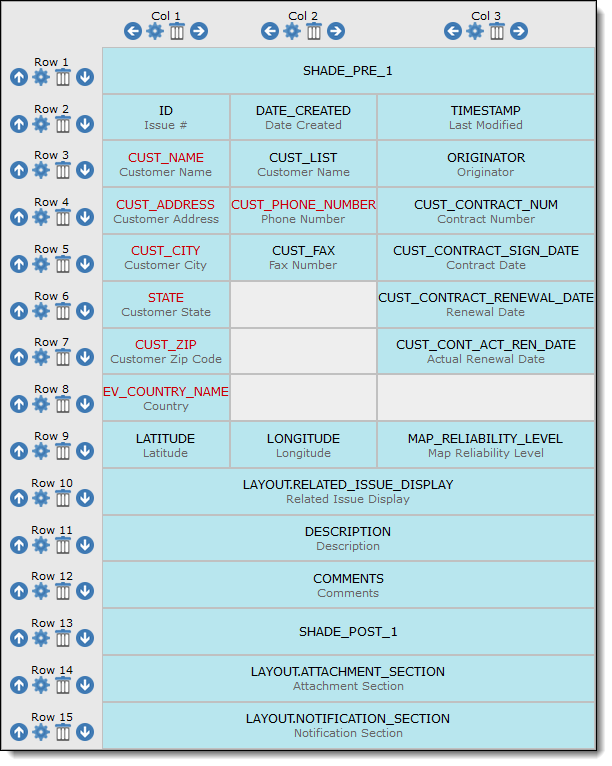Add & Edit Layouts
Add and Edit layouts are configured in every site within every Business Area. These layouts may be configured identically, or may be significantly different. It is often a strategy to begin your site development for any Business Area by creating your Add layout, then changing its type to be an Edit layout and saving that. From that point they are separately maintained layouts.
A typical Add or Edit screen layout is composed of these elements:

The layout looks like this within the Design Center:

Note that the MENUBAR layout is not embedded within the layout and is defined externally. You can see the embedded layouts as they all start with LAYOUT..
